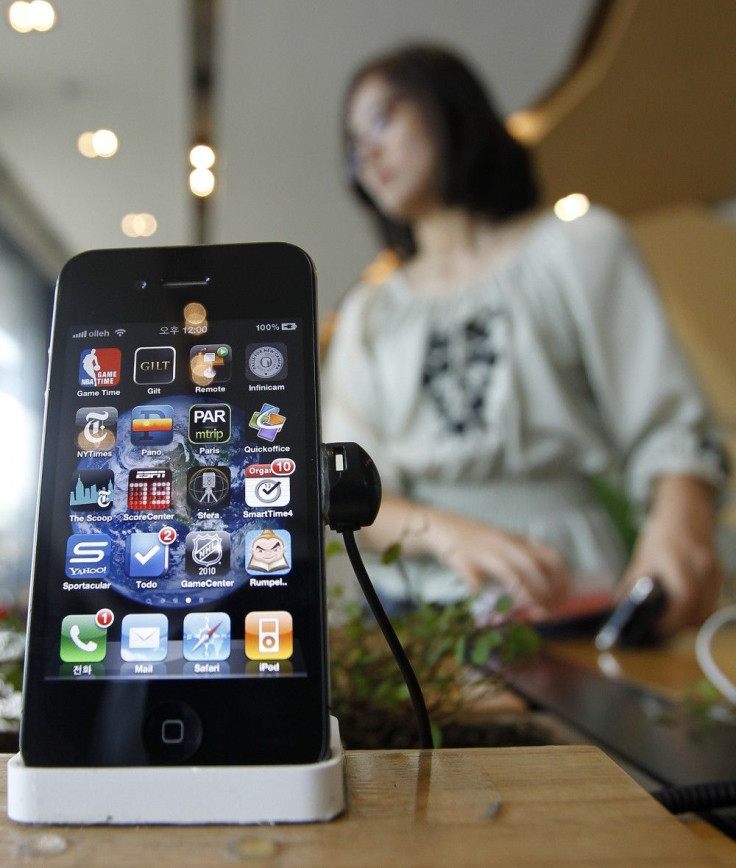COLUMN: Keeping Up with Apple's iPhone 5
Leading analyst says Apple TV on the way

I already feel bad about my iPhone 4. I really do. It's not that I haven't liked it. I really have.
A lot.
The FaceTime video chat application is a winner, and so is being able to run multiple applications at once, both major leaps beyond the iPhone 3 and what the iPhone product started with when Apple first launched it in 2007. The design is sleek, easy to handle, and being left-handed has not been a handicap for me with antenna disconnection issues.
Liking my iPhone 4 isn't the problem. Seeing that my beloved product is about to be yesterday's technology mail is the problem. Already, Apple is making plans to release the iPhone 5 with a "radical new" design, and reports suggest the latest, greatest version of Apple's mega-hit smartphone product may be out as early as August, of this year.
Just last summer the company released the iPhone 4. Way back when.
How fast the mobile technology winds do blow these days, especially for Apple.
That's good news for the company and shareholders, considering Apple can now get out new versions of its popular iPhone before CEO Steve Jobs can update us on his much-watched health issue, or almost as quick as we can get from one birthday to the next. That's strangely bad news for some consumers like me, and maybe you, considering we've barely gotten used to the one we have.
Much less paid for it.
For instance, I got the iPhone 4 by paying only $50 out of pocket for the product that retails for half a grand because I have a two-year commitment with Verizon, the services provider. Seemed like a winner for both parties. But now that I've heard about the dramatic changes in store for the iPhone 5, potentially reaching the marketplace before the end of this new summer, I'm losing some enthusiasm for my deal, and my phone.
By August, I won't even be due for an updgrade. Instead, I'll be stuck with the thing that until recently I so pleased with.
Industry watchers suspect Apple's iPhone 5 will have a bigger screen, which most any iPhone user knows is what we've all been waiting for in the product's hyper-evolution process. They should have just done it with the iPhone 4, since conventional wisdom says they already had the design ready and waiting. But they didn't. Other improvements slated for the iPhone 5 include a better camera, more RAM, and aluminum backing for the casing.
Some of the improvements are expected, a natural part of the product process. But Apple is forging into a brave new world that other companies with mega-hit products have dared not enter before, radically changing the product so quickly. Granted, Ford Motor Company might have been better served in the 1990s to not have waited so long to radically redo the popular Taurus sedan. Freshened product only goes so far. Eventually, consumers do want and expect radical redo. Other similar tales can be told again, and again, about other companies and products that waited too long.
But not regarding Apple and the iPhone. For the most part, that's a good thing, since we don't have a lot of patience when it comes to consumer technology trends. Lately, though, it feels like Apple consumers like me can barely get used to what they have before the next big thing that trumps their recent big thing is released.
They did it with the iPad last year, releasing an all-new product before most had found all the apps they wanted and needed for their current model. Now, the iPhone is on the same warp-speed track and it's making me dizzy.
I suspect I'm not alone.
We consumers have never faced such radical change with a product so popular. Granted, the mobile telecommunications industry is based upon the annual upgrade model, whereby discounts are typically given after one year, even in a two-year contract, for device replacement. Apple is obviously playing that hand hard, in addition to foraging for so many million more new users with exciting new product. But the consumer always pays in this scenario, one way or another.
Get an iPhone 5, and by then, Apple will have its product development process further refined so that we barely get to another season in the year before the iPhone 6 is coming out. Soon, it will be a new model for every seasonal holiday - Christmas, the Fourth of July.
For now, this strategy will keep working for Apple, as all bubble scenarios do - until it doesn't. But one has to wonder how long the consumer will stand for this proposition. How many years can Apple continue to fuel its growth with radical new design of its leading products in such a short time span that eventually will leave millions of consumers feeling stranded and dated like me?
I wonder.
If you bought a new black iPhone 4 that now seems old as I did, you don't really mind that the company came out a few months later with the release of a white version of the same product.
It's just a color.
If you bought an iPhone 4 as I did, you don't really mind that the company comes out a year later with some new tweaks on the older design.
I would expect as much.
However, radical wholesale differences including the look and the screen size and such coming out so quickly after the recent radical redesign leave me feeling as if I'm holding a dinosaur just from the talking about it. The iPhone 5 isn't available yet, but already I feel like mine is poised for extinction.
Probably, that's because it is.
© Copyright IBTimes 2025. All rights reserved.




















